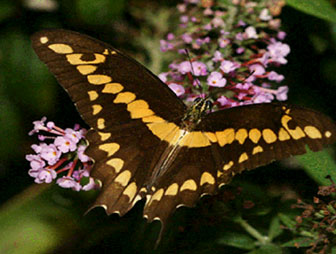|
|
Butterflies can be used to quickly assess the conservation value of an area, report researchers writing in the journal Tropical Conservation Science.
Timothy Bonebrake of Stanford University and Rubén Sorto of SalvaNATURA managed to sample 40-60% of the butterfly community in Playa El Icacal, El Salvador in just nine days. In the process, they identified areas in the region that hold the most conservation value.
“Butterflies are often used as bioindicators of ecosystem health and as surrogates for overall biodiversity. Sensitivity to changes in microclimate and habitat make them particularly good indicators for monitoring of natural areas undergoing change,” the authors write. “As with any indicator taxa, the relationship between butterfly diversity and the diversity of other species is imperfect. However, butterflies have great potential as indicators for use in conservation efforts as their taxonomy, distributions, and natural history are better described than for any other insect taxa.”
 Heraclides cresphontes. Photo by T. Bonebrake and R. Sorto. |
“We feel that the results presented here will helpfully guide conservation efforts in this area,” they continue. “We also hope that perhaps this study will inspire a more thorough investigation of the insect and ultimately the ecological community of this Salvadoran coastal countryside and others like it.”
The authors suggest using a list of widespread species and the habitats where they are found to develop an index for extrapolating the biodiversity of a site.
Bonebrake, T. C. and Sorto, R. 2009. Butterfly (Papilionoidea and Hesperioidea) rapid assessment of a coastal countryside in El Salvador. Tropical Conservation Science Vol.2 (1):34-51.